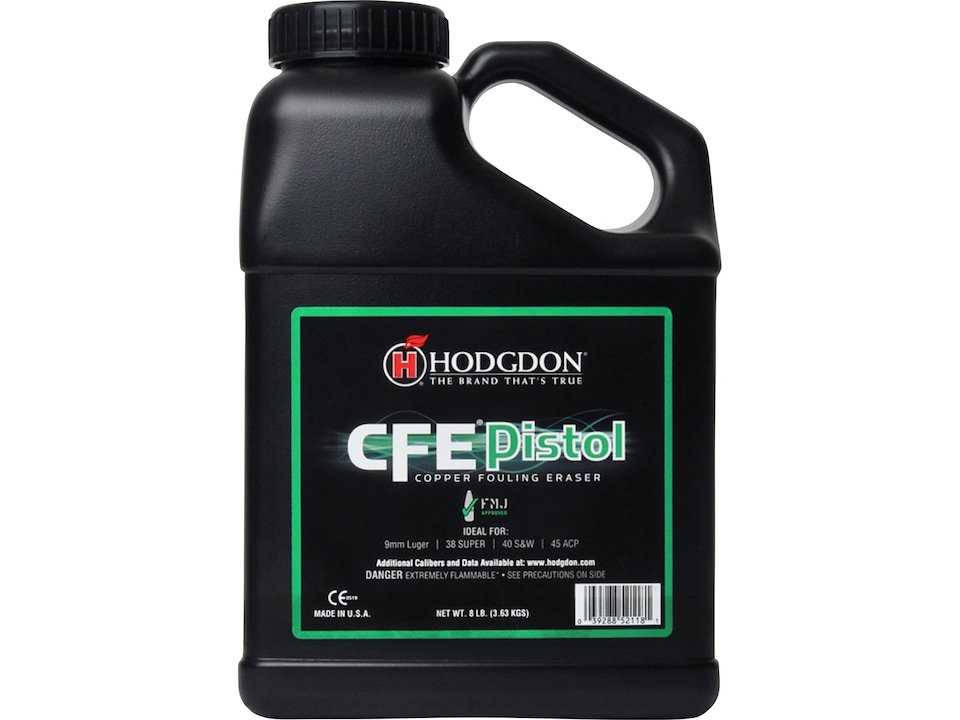
When it comes to reloading ammunition, precision is paramount. Every component, every grain of powder, and every measurement can influence the performance of a round. Among reloaders, Hodgdon CFE 223 powder stands out as a popular choice for its versatility and consistency. However, to truly master precision reloading with cfe 223, a deep dive into load data analysis is essential.
Understanding CFE 223 Powder
Hodgdon CFE 223 powder is a copper fouling eraser (CFE) formula designed to minimize copper fouling while providing excellent accuracy and consistency. Its small grain size and uniform composition make it a favorite among precision shooters, whether they are loading for long-range competition or hunting.
The Importance of Load Data Analysis
Load data analysis is the process of studying and interpreting reloading manuals, experimentation results, and real-world performance data to optimize ammunition recipes. When working with CFE 223 powder, meticulous load data analysis can unlock its full potential, ensuring consistent velocities, optimal accuracy, and safe pressures.
Components of Load Data Analysis
- Reloading Manuals: The foundation of load data analysis lies in reputable reloading manuals. These manuals provide a wealth of information on recommended powder charges, bullet weights, seating depths, and overall cartridge lengths for various calibers. When using CFE 223, consulting Hodgdon's official reloading data is crucial to understanding safe and effective load combinations.
- Experimental Testing: While reloading manuals offer starting points, every firearm is unique, and small variations can significantly affect performance. Conducting your own experiments by systematically testing different powder charges, bullet types, and seating depths allows you to tailor your loads to your specific firearm.
- Chronograph Data: A chronograph is an invaluable tool for load data analysis. By measuring the velocity of your rounds, you can ensure consistency from shot to shot and detect signs of overpressure. Recording chronograph data alongside other variables, such as powder charge and bullet weight, helps identify the optimal load for your rifle.
- Precision Measurement: Attention to detail is key in precision reloading. Invest in high-quality measuring tools to ensure consistency in powder charges, bullet seating depths, and overall cartridge dimensions. Even minor deviations can affect accuracy and performance, so precise measurements are non-negotiable.
Best Practices for CFE 223 Load Development
- Start Low, Work Up: When experimenting with new loads, always begin with the lowest recommended powder charge and gradually increase in small increments. This approach minimizes the risk of overpressure and allows you to identify the sweet spot where accuracy and velocity converge.
- Keep Detailed Records: Maintain thorough records of your reloading experiments, including powder charges, bullet weights, seating depths, and chronograph data. This information not only helps you track your progress but also serves as a valuable reference for future load development.
- Stay within Safe Limits: While striving for maximum performance is natural, never exceed the maximum powder charges listed in reloading manuals. Doing so can lead to dangerous overpressure situations, potentially damaging your firearm and risking injury to yourself and others.
- Consistency is Key: Consistency in reloading practices translates to consistency in performance. Whether it's using the same brass, primers, or reloading equipment, minimizing variables ensures that your results are reproducible and reliable.
Conclusion
Mastering precision reloading with CFE 223 powder requires a disciplined approach to load data analysis. By combining information from reloading manuals, hands-on experimentation, and meticulous record-keeping, reloaders can unlock the full potential of this versatile powder. With attention to detail and a commitment to safety, enthusiasts can craft ammunition that delivers exceptional accuracy and performance, whether on the range or in the field.